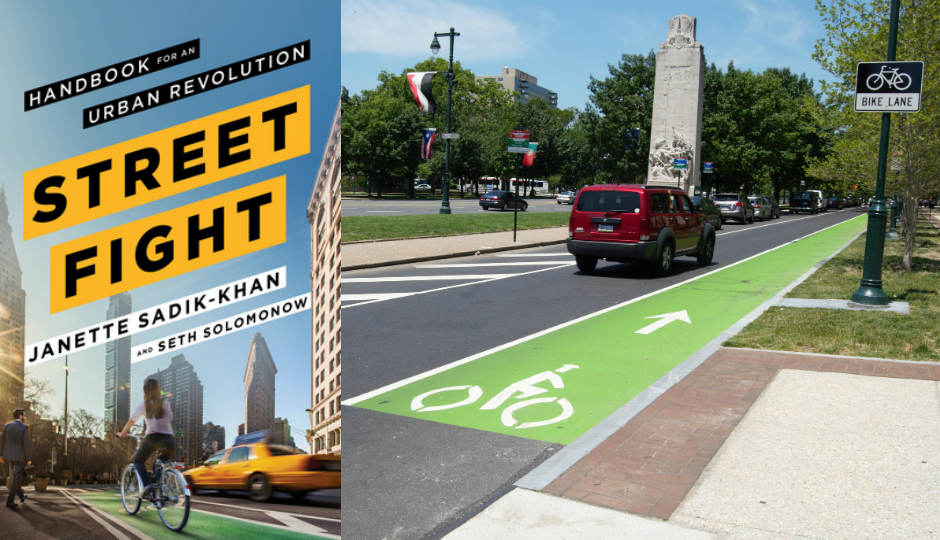A New How-to Manual for Urbanist Revolutionaries

The evolution of Philly’s bike lane network and the launch of the Indego bike-share system owe a debt to Street Fight author and former NYC Transportation Commissioner Janette Sadik-Khan. Cropped photo of Ben Franklin Parkway bike lane | Flickr user karmacamilleeon, Creative Commons license.
There’s a new how-to manual for urbanist revolutionaries looking to dismantle the car-centric infrastructure of most American cities, and it’s written by Janette Sadik-Khan, the controversial former New York City transportation commissioner who her old boss Michael Bloomberg calls “the child that Robert Moses and Jane Jacobs never had.”
The book is titled Street Fight, and it’s is a step-by-step guide to remaking city streets to cut down on speeding, better accommodate bikes and pedestrians, and improve conditions for local businesses. The book also describes the battles Sadik-Khan fought to implement her bike- and pedestrian-friendly vision.
Sadik-Khan’s work in New York was truly trailblazing: 400 miles of bike lanes. The first parking-protected bike lanes in America. The creation of a pedestrian-only space in the heart of Times Square that sparked the area’s economic revival. And overseeing the launch of Citi Bike, the nation’s largest bike-share network, which has continued to expand despite operational issues.
Her influence is felt in Philadelphia in projects such as the Grays Ferry Triangles pedestrian plaza, the buffered bike lanes and 20 mph signal timing on Spruce and Pine streets, and the Indego bike share network. For those who want to understand the origins of the “complete streets” revolution and how it is making our cities safer and more enjoyable places to live, this book is a good place to start.


